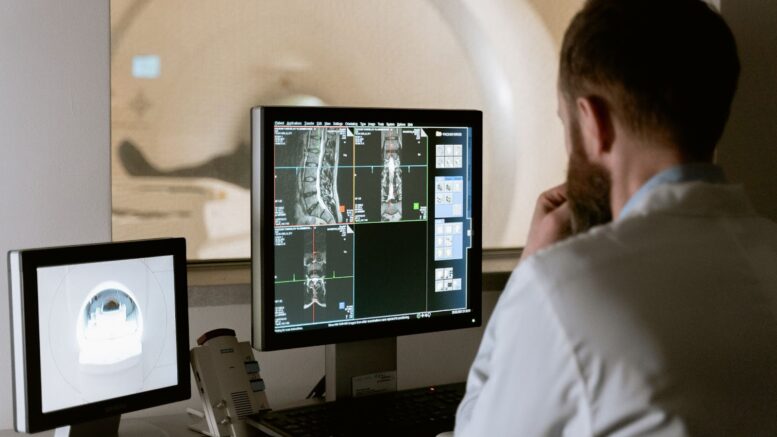Osteosarcoma, an unusual yet aggressive form of bone cancer, presents both those living with it as well as healthcare professionals with challenging circumstances. This article seeks to shed some light on this debilitating illness by discussing topics like detection methods and potential treatment approaches available; plus offering hope brought by advancements in medicine to those touched by this ailment.
Diagnosing Is Step One in Reducing Abuse
Early diagnosis is critical to optimizing osteosarcoma treatment outcomes; unfortunately, its nonspecific symptoms – including persistent bone or joint pain or swelling near joints – may be mistaken for less severe illnesses and cause delays in diagnosis; misdiagnosis of this cancer could delay crucial treatments.
Medical professionals such as https://txjointinstitute.com/ use various diagnostic tools to detect osteosarcoma, including X-rays, magnetic resonance imaging (MRI), computed tomography scans (CT) scans, and bone biopsies. These tools help pinpoint its location, size, and aggressiveness.
As soon as a cancer is identified, staging becomes crucial in understanding its extent of spread. Osteosarcomas can typically be divided into four stages: I (localized) through IV (advanced or metastatic). Staging allows oncologists to formulate tailored treatment plans designed specifically for each person.
Approaches for Osteosarcoma Treatment
Osteosarcoma treatment typically entails surgery, chemotherapy, and radiation therapy – sometimes all three. Treatment plans depend on factors like tumor size, location, stage, and overall health considerations for each patient.
- Surgery: Surgery remains the mainstay approach to localized osteosarcoma treatment, aiming at the removal of tumor cells while simultaneously maintaining as much healthy bone and limb function as possible. Amputation may become necessary depending on its proximity to vital structures or adjoining tissues; advances in surgical technology – including limb-sparing surgeries and prosthetic devices – have significantly enhanced the quality of life among survivors of this cancer.
- Chemotherapy: Chemotherapy has proven an integral component of osteosarcoma treatment both before and after surgery to shrink tumors and target any spread. Common drugs used include cisplatin, doxorubicin, and high-dose methotrexate – these have proven successful at increasing survival rates significantly.
- Radiation Therapy: While radiation therapy is less often employed for osteosarcoma treatments, it still may be considered when surgery cannot. High-energy beams are used during radiation treatments to target and kill cancerous cells within your tissues to eliminate cancer.
Clinical Trials and Research Are of Critical Importance
Osteosarcoma remains challenging to treat due to its aggressive nature and limited treatment options, thus making clinical trials an essential method for discovering novel therapies and improving results for patients with osteosarcoma tumors. Clinical trials test specific drugs or combinations explicitly designed to attack osteosarcoma tumors.
Current research is providing vital insight into the molecular and genetic causes of osteosarcoma development and potential targets for novel therapies like immunotherapy or targeted treatments that promise more effective, less toxic solutions in the future.
Osteosarcoma may seem daunting at first, yet there is reason for optimism: localized osteosarcoma survival rates have seen marked improvements due to advances in treatment approaches. Patients, families, and healthcare providers can all take solace from this fact: localized osteosarcoma survival rates have improved considerably thanks to modernizing therapies. This fact provides all stakeholders with some comfort:
- Early Diagnosis: With increased awareness and advancements in diagnostic tools, earlier identification can occur more successfully, and hospital stays have decreased substantially.
- Multidisciplinary Treatment Plans: Thanks to collaboration among orthopedic surgeons, oncologists, and radiologists collaborating, more comprehensive and tailored treatment plans have become possible.
- Advancements in Surgical Techniques: Advancements in reconstructive surgeries have significantly enhanced survivors’ quality of life by maintaining the function and appearance of limbs.
- Clinical Trials: Current research and trials promise to create more targeted therapies with reduced side effects.
- Supportive Care: Recognizing the physical and emotional challenges caused by osteosarcoma, efforts are underway to develop supportive care programs to improve patients’ and that of their loved ones.
Osteosarcoma remains an aggressive form of bone cancer that presents numerous difficulties to patients and healthcare providers. Early diagnosis and an integrated approach, including surgery, chemotherapy, and radiation therapy when necessary, are crucial in combatting it; research and clinical trials offer hope of more effective yet less extreme therapies in future treatment plans; advancements in medical science could give those living with osteosarcoma reason to be optimistic of a brighter future ahead.
